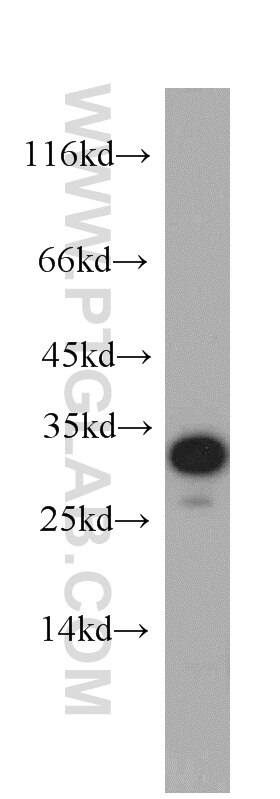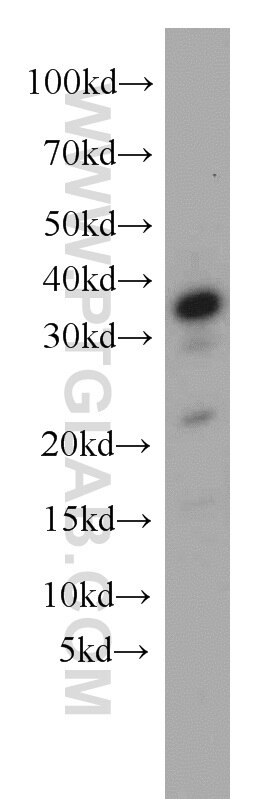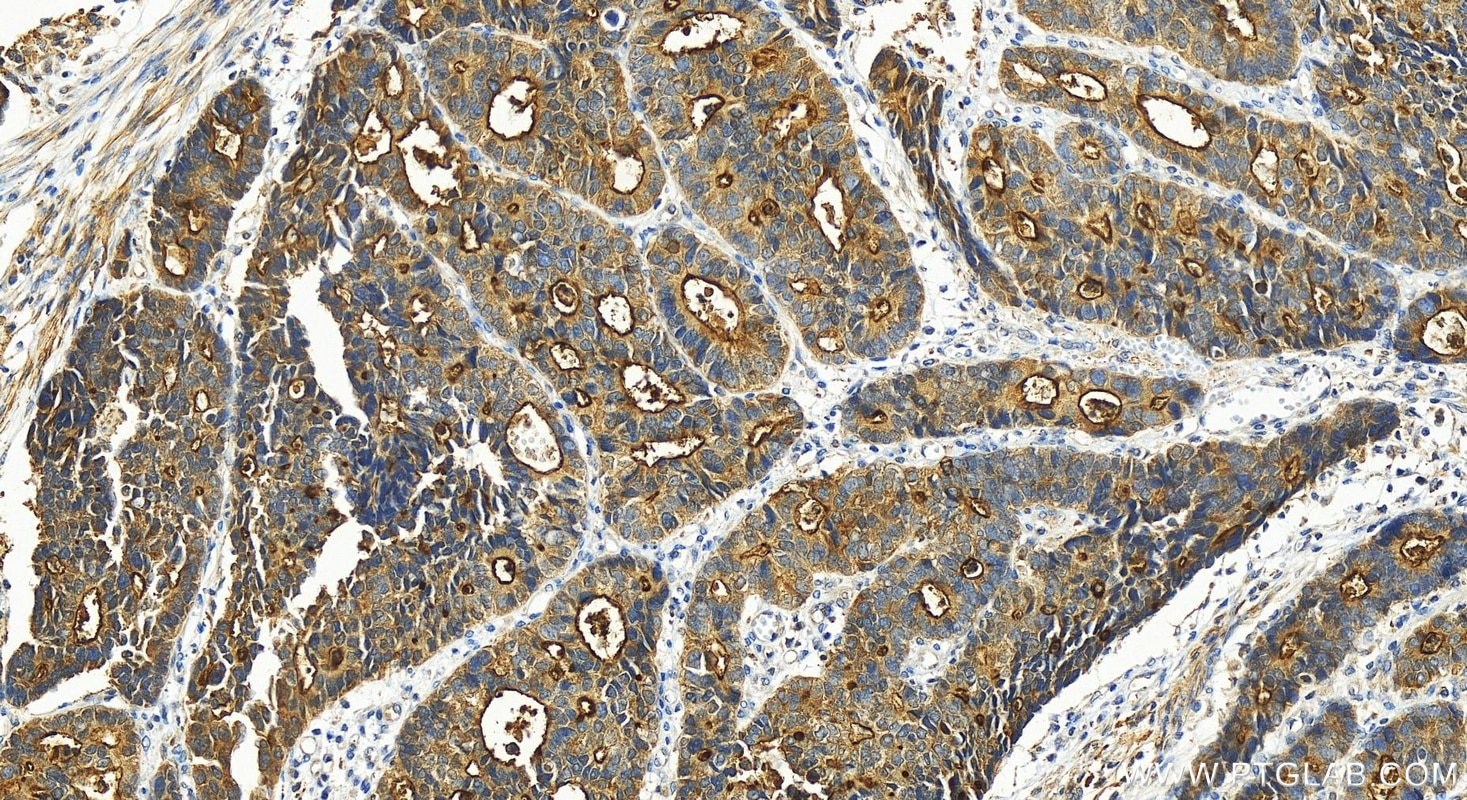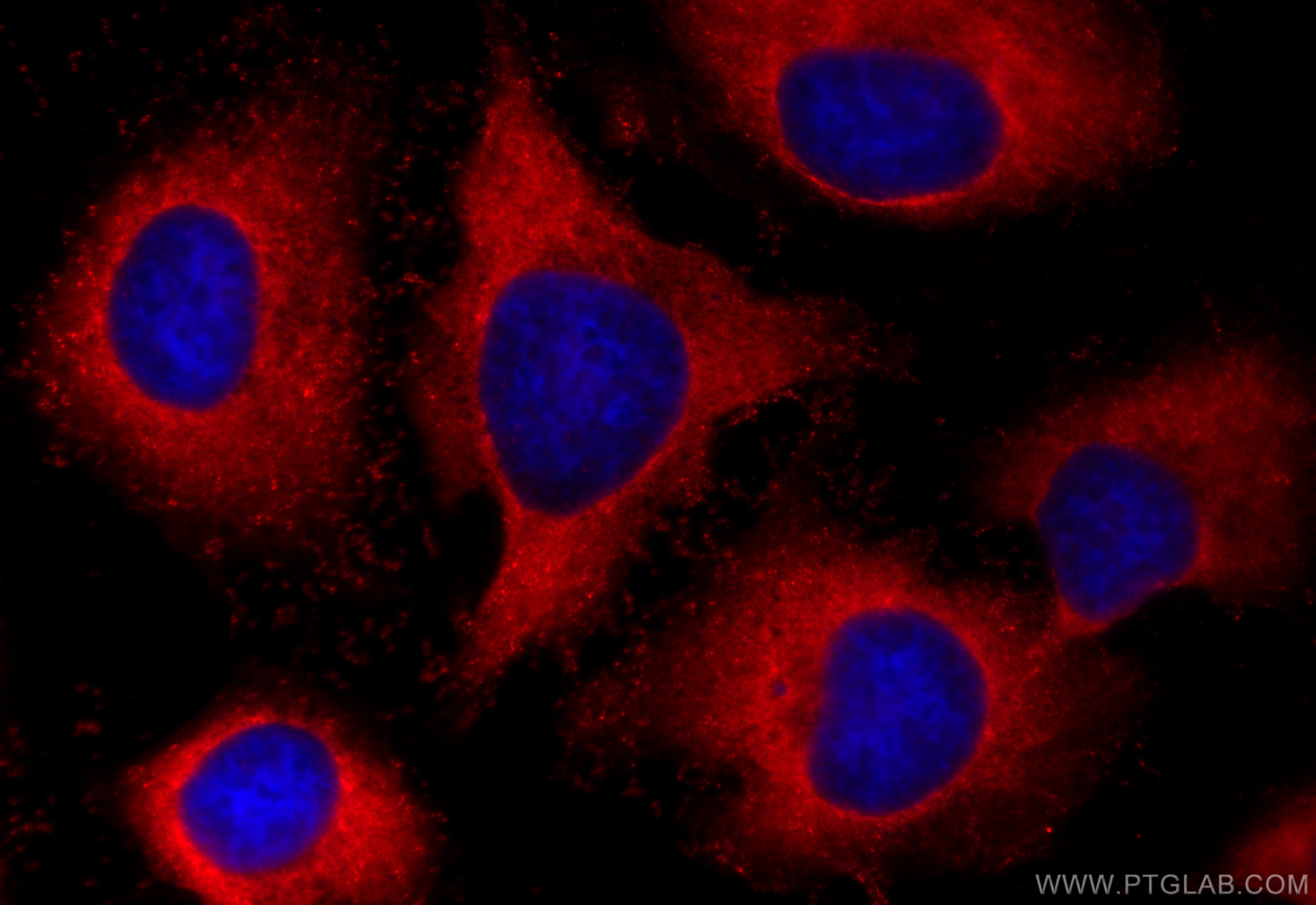Tested Applications
| Positive WB detected in | HeLa cells, L02 cells |
| Positive IHC detected in | human stomach cancer tissue Note: suggested antigen retrieval with TE buffer pH 9.0; (*) Alternatively, antigen retrieval may be performed with citrate buffer pH 6.0 |
| Positive IF/ICC detected in | HeLa cells |
Recommended dilution
| Application | Dilution |
|---|---|
| Western Blot (WB) | WB : 1:500-1:1000 |
| Immunohistochemistry (IHC) | IHC : 1:50-1:500 |
| Immunofluorescence (IF)/ICC | IF/ICC : 1:200-1:800 |
| It is recommended that this reagent should be titrated in each testing system to obtain optimal results. | |
| Sample-dependent, Check data in validation data gallery. | |
Published Applications
| KD/KO | See 1 publications below |
| WB | See 3 publications below |
| IF | See 1 publications below |
Product Information
55060-1-AP targets PYCR2-specific in WB, IHC, IF/ICC, ELISA applications and shows reactivity with human samples.
| Tested Reactivity | human |
| Cited Reactivity | human |
| Host / Isotype | Rabbit / IgG |
| Class | Polyclonal |
| Type | Antibody |
| Immunogen |
Peptide Predict reactive species |
| Full Name | pyrroline-5-carboxylate reductase family, member 2 |
| Calculated Molecular Weight | 34 kDa |
| Observed Molecular Weight | 27-31 kDa, 20 kDa |
| GenBank Accession Number | NM_013328 |
| Gene Symbol | PYCR2 |
| Gene ID (NCBI) | 29920 |
| RRID | AB_10888635 |
| Conjugate | Unconjugated |
| Form | Liquid |
| Purification Method | Antigen affinity purification |
| UNIPROT ID | Q96C36 |
| Storage Buffer | PBS with 0.02% sodium azide and 50% glycerol, pH 7.3. |
| Storage Conditions | Store at -20°C. Stable for one year after shipment. Aliquoting is unnecessary for -20oC storage. 20ul sizes contain 0.1% BSA. |
Background Information
PYCR2, also named as P5CR2, belongs to the pyrroline-5-carboxylate reductase family. It catalyses the reaction: L-proline + NAD(P)+ = 1-pyrroline-5-carboxylate + NAD(P)H. This antibody is specific to PYCR2 and has no cross reaction to PYCR1.
Protocols
| Product Specific Protocols | |
|---|---|
| IF protocol for PYCR2-specific antibody 55060-1-AP | Download protocol |
| IHC protocol for PYCR2-specific antibody 55060-1-AP | Download protocol |
| WB protocol for PYCR2-specific antibody 55060-1-AP | Download protocol |
| Standard Protocols | |
|---|---|
| Click here to view our Standard Protocols |
Publications
| Species | Application | Title |
|---|---|---|
Cell Rep Proline restores mitochondrial function and reverses aging hallmarks in senescent cells | ||
Sci Rep Activation of proline biosynthesis is critical to maintain glutamate homeostasis during acute methamphetamine exposure. | ||
Int J Mol Sci Deciphering the Effects of the PYCR Family on Cell Function, Prognostic Value, Immune Infiltration in ccRCC and Pan-Cancer
|










